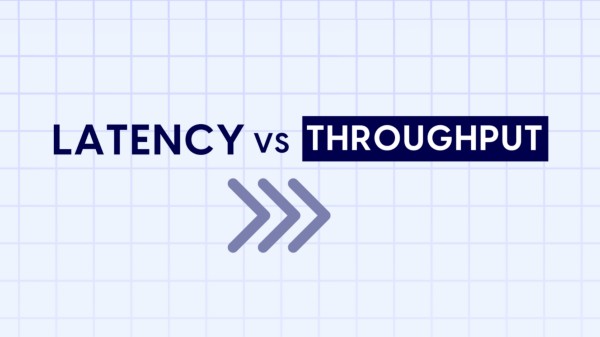Written
by edgeuno tech
Jun, 21, 2023
Last modified on May, 02, 2024 at 03:15 pm
Latency vs Throughput
Latency is the time taken for data to travel from its source to its destination across a network. Several factors can contribute to latency, including distance, network congestion, and the number of devices on the network. Latency is crucial for applications that require real-time interaction such as online gaming, video conferencing, and voice over IP (VoIP) applications. For instance, in online gaming, low latency is imperative for players to react quickly to changes in the game environment, and for their actions to be accurately reflected on the screen.
On the other hand, network throughput is the volume of data that can be transmitted across a network in a given period of time. This metric is typically measured in bits per second (bps) or bytes per second (Bps), and it is influenced by several factors, such as network bandwidth, the number of devices on the network, and the type of network protocol used. High network throughput is critical for applications that require the transfer of large amounts of data, such as streaming video, file sharing, and online backup.
Streaming is a technology that relies heavily on network throughput. When streaming videos or music, substantial amounts of data must be transferred from the streaming server to the user’s device in real-time. If network throughput is low, this can result in buffering, which can cause delays and interruptions in the streaming experience. Similarly, file sharing and online backup services require high network throughput to transfer large amounts of data quickly and efficiently.
Gaming and video conferencing, on the other hand, are examples of technologies that rely on low latency. In online gaming, high latency can result in delays and inaccurate feedback, which can have a significant impact on gameplay. In video conferencing, low latency is crucial for ensuring that participants can interact in real-time, without delays or interruptions.
When it comes to implementing network performance, it is crucial to consider both latency and network throughput, as they both contribute to the overall network efficiency and user experience. By measuring both metrics, organizations can identify areas that require optimization to improve overall network performance. Additionally, organizations must be aware that different applications may require different approaches to network performance optimization.
For instance, some applications may require low latency at the expense of network throughput, while others may require high network throughput at the expense of latency. Therefore, organizations must prioritize the optimization of network performance based on the specific needs of their applications and users.
One effective way to optimize network performance is by leveraging edge computing. Edge computing involves placing data processing and storage closer to the end-users, reducing latency and improving overall network performance. This approach can be particularly effective in applications that require low latency, such as online gaming and video conferencing.
In conclusion, network performance is a critical factor in today’s digital age, and it requires careful consideration of both latency and network throughput. Organizations must prioritize network performance optimization based on the specific needs of their applications and users. By implementing edge computing, organizations can significantly improve network performance, reducing latency, and improving overall user experience.
 Back to Blog
Back to Blog



